Plaza de Cibeles, Madrid
As long-suffering Puffins were finishing off last week’s episode of Nostalgia Album ( Aranda de Duero to Madrid) which terminated at the Plaza de Cibeles, thousands of Madridistas were gathering at that very same public plaza to celebrate Real Madrid’s European Champions League victory over Liverpool. Traditionally the team captain of places a Real Madrid scarf and flag on the statue of Cibeles to mark the victory.

Fountain in Plaza de Cibeles,
Naknaknak – Public domain
Part of a fountain, the white marble 1780 Francisco Gutiérrez work shows the Anatolian earth-goddess, later adopted by the Greeks and Romans, in a chariot pulled by two lions who represent the gods Atalanta and Hippomenes. Well-travelled Puffins will already be aware that a bronze replica sits at the Fuente de Cibeles in Mexico City.
Seventy years previous to the latest Los Blanco celebrations, my father and grandparents, having passed Real Madrid’s Santiago Bernabeu stadium en route, paused to photograph the public square where the avenues of Alcalá and (in those days) Generalissimo Franco meet.
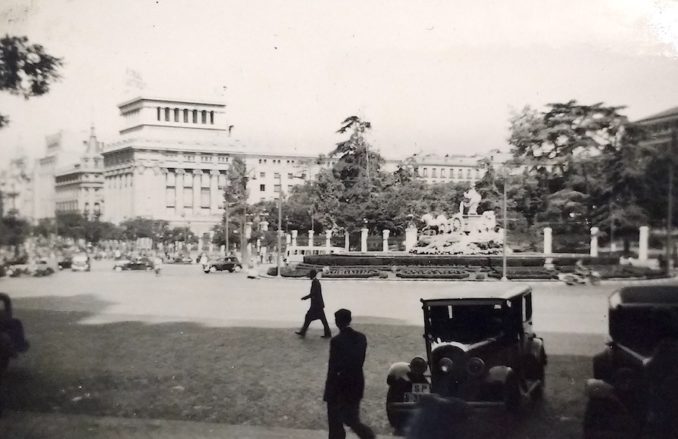
© Always Worth Saying 2022, Going Postal
Behind the statue we can see the gardens of the Palacio de Buenavista which sit before the General Headquarters of the Spanish Army in what previously was the Dukes of Alba’s Madrid residence. The building to the left is Alcalá 49, currently the headquarters of the Instituto Cervantes, a Spanish version of the British Council. As my family’s heroic Ford 8 arrived in 1952 it was the headquarters of the Banco Central.
Continuing down Alcalá for about half a mile takes you to Puerta Del Sol, a public space familiar to all visitors to Madrid. The dead centre of Spain, all road distances are calculated from here, as if an Iberian Rome or Charing Cross. At Sol, we learn that the old National Road One (N-1) between Madrid and the French border at Irun, which my father and grandparents had just traversed, covers a bone-shaking leaf-spring bending 295 miles.
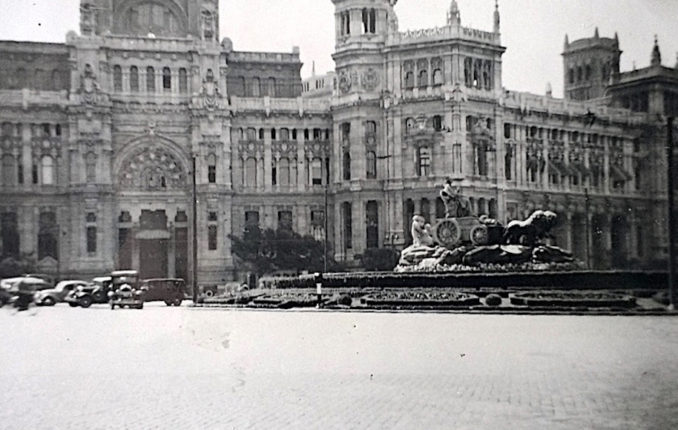
© Always Worth Saying 2022, Going Postal
Back in the Plaza de Cibeles, and looking to the southeast, we can see the Palace of Communications. This was the Spanish capital’s main post office, telephone and telegraph headquarters between 1919 and 2011. It is now known as the Cibeles Palace and is used as government offices.
While being drawn through the streets on lion hauled chariots, the gods play idly with that trifling nuisance that mortals know as time. Although it seems like yesterday, my trips from Paris to Madrid were closer to 1952 than to the present day. Passing through Madrid forty years ago, I inadvertently snapped a photo of where my father and grandparents had been three decades previously. My own attempt dates me. Not an electric car in sight. Towards the bottom and slightly to the left, a brown-green Fiat 131 is visible. I wonder if it was a Barcelona built SEAT version?

© Always Worth Saying 2022, Going Postal
By coincidence, at the time the photo was taken I was the same age as my father, 21. Before you ask, no, I wasn’t travelling with my parents but might as well have been. Accommodations were provided by an order of vigilant local nuns, as adept at separating the sexes as whisking newborn babies away from fallen women to the arms of the Generalissimo’s childless favourites.
Gentlemen were housed to the right of the pension’s grand staircase, ladies to the left. If tempted to take a deep breath and tiptoe, the sisters could hear a feather drop – while asleep and wearing earmuffs – even if jackhammers were digging up a nearby calle.
In a sign that not much changes, one of my sons, also in his twenty-first year, recently struck out for Spain. More of which later.
Looking down Alcalá, the building in the middle with the domed roof topped by a statue, is the Metropolis Building, a five-story beaux-arts office block originally built for La Unión y el Fénix insurance company. Initially, the statue was of Phoenix carrying Ganymede upon a wing but latterly it is of a winged Nike entitled ‘Victoria Alada’, or ‘winged victory’. To the extreme left, is the Bank of Spain, the Iberian republic’s version of the Bank of England.
As the shutter clattered, I was about to take a left and pass the Prado Museum and Royal Botanical Gardens while heading to Atocha, a much more pleasant railway terminus than the brutalist Chamartín mentioned last time. Chamartín’s predecessor, Madrid Norte, usually known via its location ‘Principe Pio’, was still in use and handled trains originating from the northwest. Services from Coruna, Vigo and Orense terminated there.
Badly damaged in the Civil war of 1936-1939, Principe Pio was pleasingly restored but by 1993 all of the northern services had been transferred to Chamartín with Norte ceasing to be a mainline station.
As for the different styles, as one might assume, the older the better.
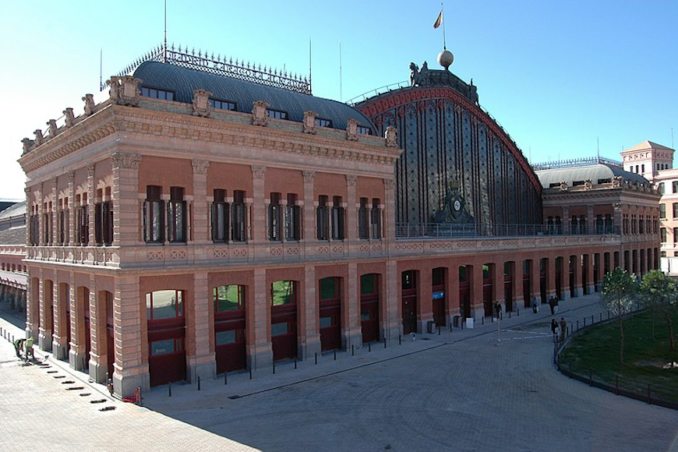
North-west façade of Atocha railway station,
Roxanna Salceda – Licence CC BY-SA 2.0

Old North Station, Madrid, Spain.,
Kadellar – Licence CC BY-SA 3.0
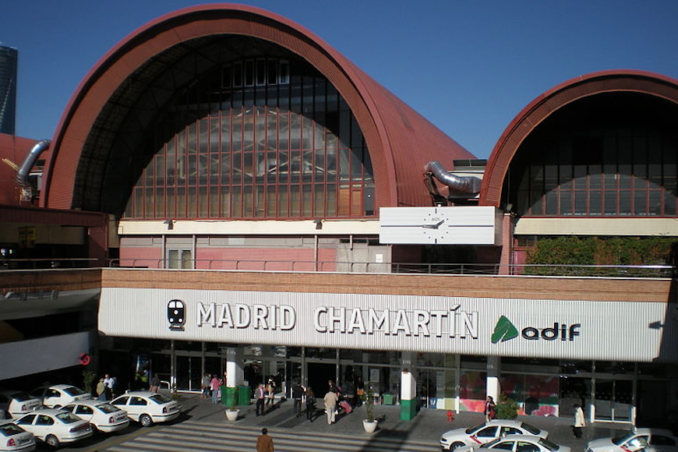
Fachada de la estación de Chamartín,
M.Peinado – Licence CC BY-SA 2.0
Why does everything have to get worse? As I was heading south by train, so the next Nostalgia Album images show the intrepid road-farers were too, rather than west to the gaming tables of Portugal’s Atlantic coast.
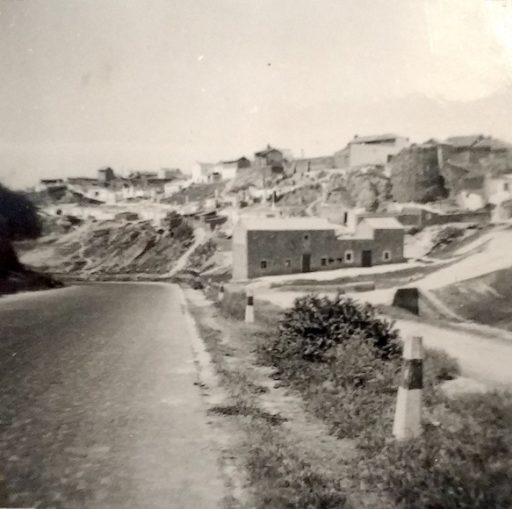
© Always Worth Saying 2022, Going Postal
But where is this? Sol reminds us that National Road 4 heads that way. Because of what follows, this interesting hilly curve must be just south of Madrid on the old N-4. To the right, there seems to be a ruined tower or curved fortification. The contour of the hill, above the road and below the poblacion, appears to hold a row of classical pillars as if the work of ancients.
Aranjuez
The next photo is helpfully captioned and depicts a recognisable location. As the gods arranged for us to pass Santiago Bernabeu just as Real Madrid won a trophy, likewise they teased us by arranging a trip to a royal palace, during the year of the Queen’s accession, to fall into an article on Platinum Jubilee day seventy years later.

© Always Worth Saying 2022, Going Postal
A UNESCO world heritage site, Aranjuez lies on the river Tagus, approximately 33 miles from Sol. Established as a royal estate by Philip II in 1560, for the next 190 years only royalty and nobility were allowed to live in the town.
As well as a magnificent bull ring, the Spanish royal family’s former spring residence (yes, they had more than one giant palace) also includes parks and gardens, a hunting lodge, hunting grounds, a theatre and a giant fountain called Mariblanca (also known as Venus fountain) which sits in the Plaza San Antonia before the San Antonia church. The Plaza San Antonia is a flat and vast equestrian venue where we find the intrepid Ford 8 photographed in the days when one could turn up to a royal palace on speck and park anywhere.
On Street View the impressive terrace is still interrupted by a balcony display of flowers. We shall assume this is the exact spot where the car was parked, although concrete bollards now protect the pavement.
Crossing the Sierras
There follows a lengthy gap in the photographic narrative. The railway runs through Aranjuez too and generally follows the national road route until just south of Linares, 182 miles from Madrid, where myself and the southbound sleeper swung west, in the direction of Cordoba, to take advantage of a gap in the mountains. Another line heads east, striking around the most difficult of the high ground before changing direction to reach Granada.
However, my father and grandparents continued due south with the next photographs being of Sierra De Alta Coloma, part of the southern Spanish Baetic Mountain range.
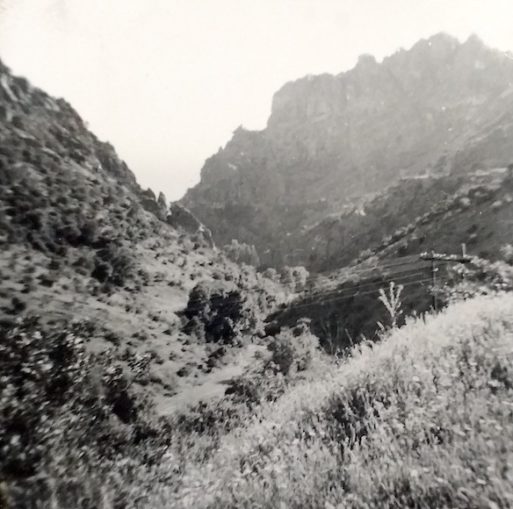
© Always Worth Saying 2022, Going Postal
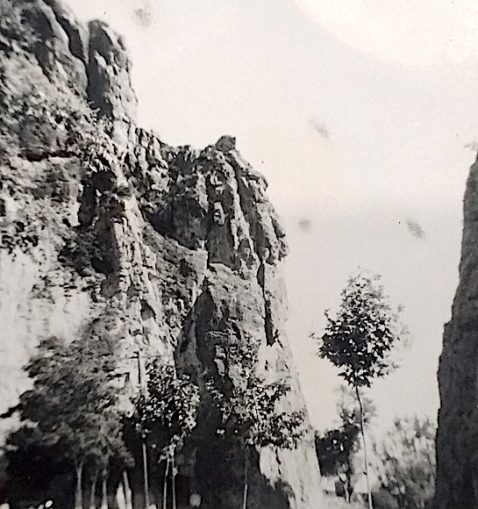
© Always Worth Saying 2022, Going Postal
This particular Sierra is a ridge, rising to an elevation of 4,300 feet, situated southwest of Sierra de Lucena and on the direct route to Granada. To the casual observer, the nearest habitation to the ridge might be Campillo de Arenas which is where my search began, along the mega-highway that cuts through the lower part of a neighbouring valley, at times alongside the old route 4 and at times on top of it.
Sure enough, with persistence, I eventually happened upon the site of the old photographs. After passing through a tunnel, the Ford 8 was parked in a passing place and facing away from the direction of travel when the above image was captured. In the modern-day, the superhighway sits to the right, on the opposite bank of the river Rio de Campillo which runs through the pass. Two more tunnels have been blasted through to accommodate more carriageways.
Although there are no photos of Granada, they must have gone there with the best offering being a distant view of the nearby Sierra Nevadas, a more severe outcrop of mountains which separate the Baetics from the Mediterranean Sea.
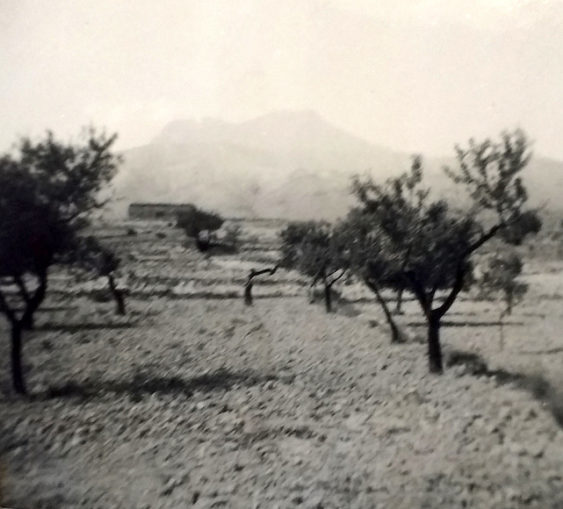
© Always Worth Saying 2022, Going Postal
You would expect progress from Granada to be in the direction of the coast at Motril but the next photos are of Puerto del León, another interesting route you would think best avoided, which leads directly to Málaga.
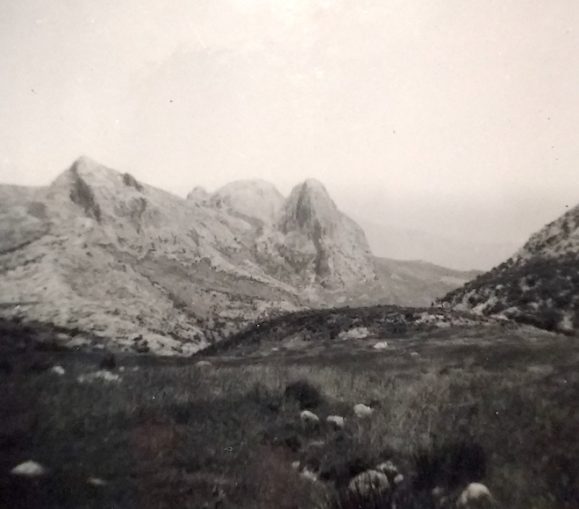
© Always Worth Saying 2022, Going Postal
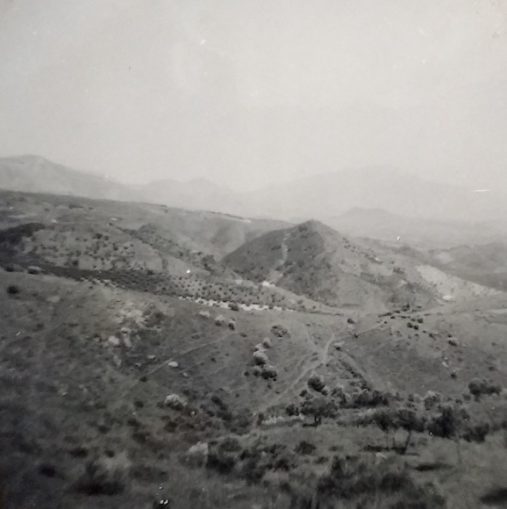
© Always Worth Saying 2022, Going Postal
I can’t find the exact spot but many points along the route capture the eternal nature of southern Spain’s dusty mountain roads. This Street View is at the summit of the route, viewed from a layby opposite the Venta Gatwey eatery. Could this be where the second Puerto de León photograph was taken? The landscape doesn’t quite look the same, appearing greener and cooler than seventy years later. Perhaps as a result of global warming? After the summit, the road begins the drop to Málaga and skirts the eastern fringe of the Montes de Málaga national park.
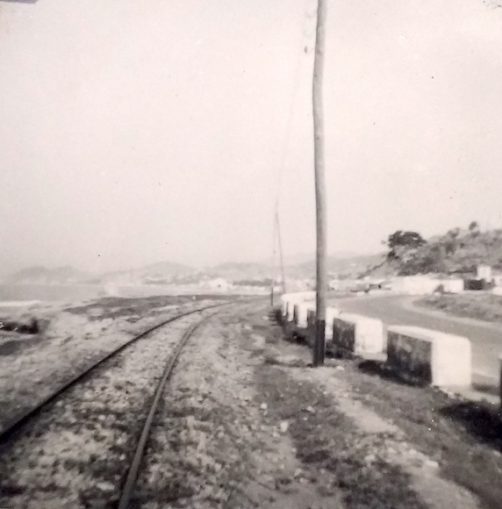
© Always Worth Saying 2022, Going Postal
Upon reaching the coast, a more contemporary tourist might note the absence of a billion tons of concrete. A theme is emerging – everything was better in the old days. What we can see is a railway line which will help to identify this spot next time. Is Málaga our final destination? And what obliges my father and grandparents to travel all the way from Carlisle to the south of Spain in a Ford 8? Find out next time on Nostalgia Album!
© Always Worth Saying 2022


